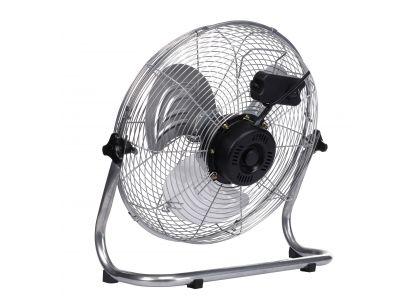
There are two ways to test the air volume and air pressure of the cooling fan, one is to use the wind tunnel tester, and the other is to use the double box method to test. But for the average customer, there is no such device. It can only be based on the data provided by the manufacturer as a reference, and ultimately depends on the heat dissipation effect.
Air volume: Air volume refers to the ratio of the plane speed of the fan ventilation area. The ventilation area is the outlet area minus the projected area at the vortex tongue. Plane velocity is the velocity of the gas moving through the entire plane, and the unit is m3/s. When the plane speed is constant, the larger the outer diameter of the fan impeller, the larger the ventilation area, and the larger the air volume. The plane speed is determined by the rotor speed and wind pressure. When the ventilation area is constant, the greater the plane speed, the greater the air volume. The greater the air volume, the greater the heat absorbed by the air, the more heat can be taken away by the airflow during the transfer, and the more obvious the fan heat effect is.
Wind pressure: In order to carry out normal ventilation, it is necessary to overcome the resistance in the ventilation stroke of the fan. The fan must generate pressure to overcome the air supply resistance. The measured pressure change is called static pressure, that is, the difference between the maximum static pressure and the atmospheric pressure. It is the pressure exerted by a gas on a surface parallel to an object, and the static pressure is measured through a hole perpendicular to its surface. Converting the kinetic energy required in the gas flow into the form of pressure is called dynamic pressure.
In order to achieve the purpose of air supply, static pressure and dynamic pressure are required. The total pressure is the algebraic sum of static pressure and dynamic pressure. Total pressure refers to the increase in total pressure given by the fan, that is, the difference between the total pressure between the outlet and the inlet of the fan. In practical applications, the nominal maximum air volume value is not the air supply volume obtained by the actual heat sink. Large air volume does not mean strong ventilation capacity. When the air is flowing, the airflow will encounter the obstruction of the fan or components in its flow path, and its impedance will limit the free circulation of the air. That is, when the air volume increases, the air pressure decreases. Therefore, there must be an optimal operating point, that is, the intersection of the fan performance curve and the wind resistance curve. At the operating point, the slope of the fan characteristic curve is the smallest, and the change rate of the system characteristic curve is the lowest. Note that the static efficiency of the fan (air volume × air pressure ÷ power consumption) at this time is the best. Of course, sometimes in order to reduce the system impedance, even a smaller fan can be used to obtain the same air volume.